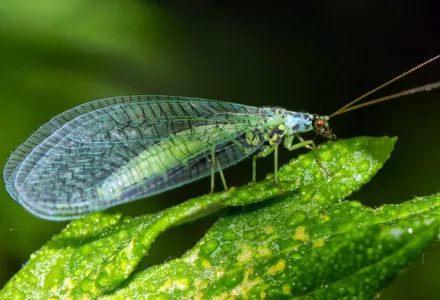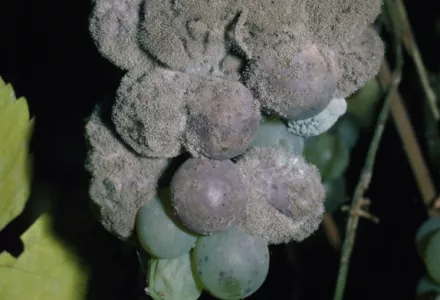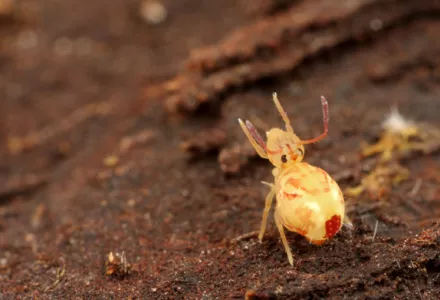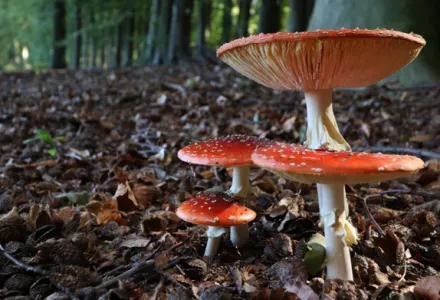Plant protection products are compounds that are used to kill, repel and control pests. They can be used for various purposes. For example, the aim can be to protect a crop before and after harvesting, promote the development of the plant, stop weeds from growing or preserve plant products. These products may be natural such as pyrethrin, azadirachtin or nicotine or they may be synthetic, such as DDT.

Plant protection products fall into a number of categories – insecticides, acaricides, fungicides, nematicides, soil disinfectants, herbicides or plant growth regulators – depending on their specific function.
A plant protection product does not just contain the active ingredient that has the intended effect on the pest that needs to be controlled, but is a mixture of substances. We therefore refer to plant protection products as formulated solutions or products.
In addition to the active ingredient, they contain non-active ingredients such as water, coassistants that help the active ingredient to have its effect such as humectants, and other additives such as repellent or emetic additives. These additives can include chemicals that give the product an intense or unpleasant smell. These aromas are added to deter people from consuming or touching plants that have been treated with that product.
Depending on the formulation, one and the same active ingredient can be sold in various formats. Pesticides can be formulated as a soluble powder (SP), a wettable powder (WP), an emulsifiable concentrate (EC), a suspo-emulsion (SE), a soluble concentrate (SC), a water dispersible granule (WG), an oil miscible flowable concentrate (OF), and so on.
Properties of an insecticide
One of the main properties of an insecticide is its efficacy and this is measured in terms of the effect that it has on the target pest(s). One of the main factors that determine the efficacy of an insecticide is its effect spectrum. For example, in this context there are insecticides that act on a broad spectrum of pests (also known as multipurpose pesticides).
Insecticides that respect useful fauna are termed 'selective', or 'specific' when they act on only one specific pest such as acaricides, which target mites specifically.
The type of formulation can also influence the effectiveness of the product. The route by which the plant protection product penetrates the plant to be treated is another aspect that will influence its efficacy. In the case of systemic insecticides, the products penetrate the plant and travel through its vascular system. If they are transported by the xylem, the active ingredient will be transported up to the plant's tips where it will do its work. Insecticides for treating pests such as aphids often work through this mechanism. In most crops that have been attacked by aphids, the majority of the aphids are located at the growth tips.
When such an infestation occurs, many plants will respond by twisting their leaves, which makes contact between the insecticide and the aphids difficult using a spray, for example. By using systemic insecticides, we can ensure that the pest ingests the toxin without having to spray it onto the affected area. Some products are applied to the leaves and transported by the phloem to the roots such as, for example, the phosethyl aluminium fungicide.

The translaminar route is another way in which an insecticide can penetrate. This occurs when the product can cross the leaf from the topside to the underside and is very useful for pests that establish themselves on the underside of the leaves such as red spider mite. It is always more difficult to reach the underside of leaves in a uniform way, but with these products you can be sure that the product will have its effect on the whole of the plant even if only the topside of the leaves are treated.
To conclude, penetrating insecticides or those that have an internal effect are those products that penetrate the plant tissue but, compared to systemic pesticides, they only cover short distances.
Another property of insecticides relates to the duration of the toxic effect once it has been applied. This is referred to as persistence. Unlike persistent plant protection products, those referred to as “shock products” are those that have an immediate effect after they have been applied but are not persistent. It is very important to be aware of a product’s persistence in order to determine the correct interval between treatments if several applications are required to control the pest.
Another issue to bear in mind when choosing an insecticide is whether it will be used as a preventative measure or as a cure. It is very common to use fungicides to prevent the growth of any fungus, while acaricides and insecticides are often used after a pest has taken hold.

Depending on how they exert their toxic effect on the pest, we have plant protection products that work on contact or when ingested or inhaled, and some may have an effect through several of these routes.
Classification by means of action
The most common way of action for insecticides is through chemical means, where they have an immediate toxic effect on the target pest. However, others are effective due to their physical effect. These are products that form a layer on the surface of larvae and adults, stopping their development. Their destructive effect on larvae is due to the fact that the product hardens or dissolves the shell, meaning that hydrous or gaseous interchange is impeded, without which the organism cannot survive. Some can penetrate the organism, leading to metabolic imbalances.
There are also insecticides that interfere directly with the physiology of the pest, impeding its development. This is the case in the development of inhibitors and the development of insecticides that have an effect through various methods. Development inhibitors may work by, for example, interrupting the moulting process or impeding the formation of a new cuticle. Some of these products are pest-specific hormones that regulate insect growth, metamorphosis and mating. Others work by impeding the formation of chitin, which is a substance that can only be found in arthropods and fungi. Insecticides can destroy larvae or may repel or sterilize the target organisms, depending on the possible route they take to exert their effect.
Are plant protection products hazardous to people?

Long-term toxicity occurs as a result of repeated ingestion/contact with the product and is most common among consumers. Possible long-term intoxication is due to residue. Residue is defined as the plant protection substances that remain after treatment at a toxicologically significant level. Residue that is not toxic is referred to as ‘remains’.
Metabolites are also considered as residue and are produced as the plant protection product degrades into decomposition or reaction products where these continue to have toxic effects as defined above.
Once plant protection products have been used, they must disappear quickly from the environment to ensure that risks do not occur as a result of their toxic properties. The process of decomposition of the plant protection product after application is referred to as dissipation. An exogenous dissipation may occur because of plant growth or due to mechanical and physical causes such as, for example, rain. There are also chemical aspects that contribute to degradation such as hydrolysis, oxidation and photodecomposition processes (this is not an exhaustive list).
Another route for dissipation is through endogenous causes – that is, due to degradation processes that occur due to metabolism. In this case, metabolites are produced that may be harmless or toxic depending on the plant protection product that has been used.
The authorities set a maximum residue limit (MRL) that consumer products may result in, so that consumers are not exposed to the risk of toxicity. This parameter is linked to the ‘safety period’ – the time that elapses between applying the plant protection product and harvesting. The Lethal Dose 50 (LD50) parameter is used to assess toxicity. This parameter indicates the quantity of the active ingredient that leads to the death of 50% of the organisms on which tests are performed, using the route of ingestion. These tests are performed with laboratory animals such as mice and rats. Within the LD50 parameter, we can make a distinction between acute oral LD50 - where the product is ingested, acute dermal LD50 – where the product is applied to skin or Lethal Concentration 50 (LC50) - where the product is inhaled.

‘No effect level’ (NEL) parameters are also used to indicate the quantity at which no harmful effects are perceived in organisms, such as problems with reproduction, teratogenesis, carcinogenesis, and so on. Based on the previous parameter, an Acceptable Daily Intake (ADI) level can be determined that indicates the quantity of plant protection product that may be ingested based in terms of body weight per day with no adverse effects on the organism.
The product is classified as category 1 (very toxic), category 2 (toxic) category 3 (harmful) and category 4 (low risk), depending on the product’s LD50 or LC50 parameters.
The label must bear a pictogram and a signal word (‘danger’ or ‘warning’) indicating the type of hazard involved when handling or using the pesticide. This must also include some hazard and precautionary statements.
Risk to land and aquatic animals
Some insecticides may cause significant harm to animal species near the location in which they are used, but their harmful effect may also extend to places further away due to the contamination of aquifers or because the products are washed into rivers and seas.

Plant protection products are classified as follows, depending on the risk they represent to land and aquatic animals:
- Category A: Their use does not represent any risk as long as they are used correctly.
- Category B: Moderate risk. These include products that can cause harm to land or aquatic animals if used incorrectly or in a non-controlled manner.
- Category C: High or very high risk. These insecticides may cause significant harm if not used correctly and in areas where there is an important presence of fauna. The products that pose a risk to land animals may not be used in grasslands, pasture land, forest areas, humid areas and river networks. Products that entail a risk to aquatic animals are completely prohibited in humid areas and near rivers.
























